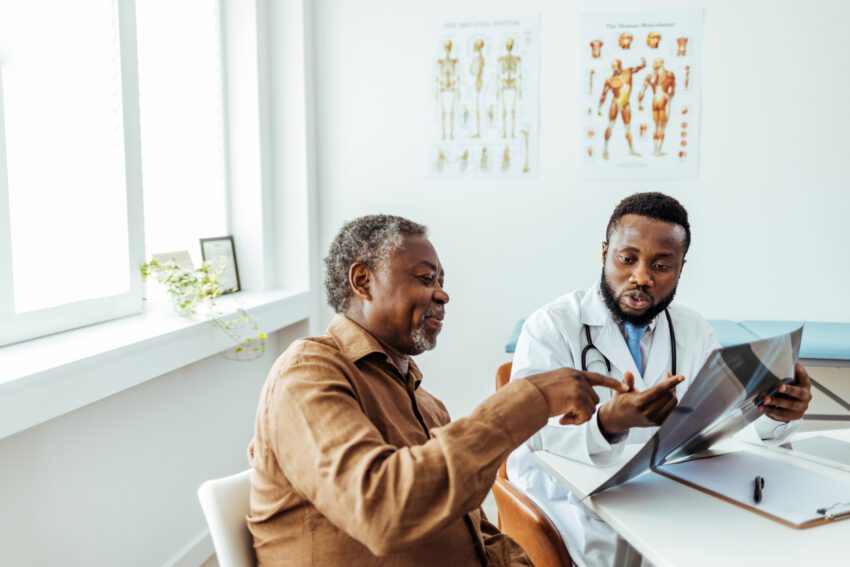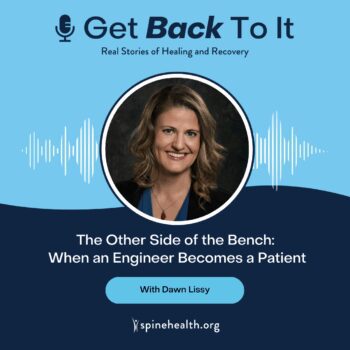A disc herniation, also known as a ruptured disc, happens when the soft, jelly-like center of a spinal disc pushes out through a tear in the tough outer layer. This can put pressure on nearby nerves and cause pain. This most often involves discs in the cervical (neck) and lumbar (low back) regions of the spine.
Common Causes
- Aging: As you get older, discs can lose water content, making them less flexible and more likely to tear.
- Injury: Lifting heavy objects incorrectly, falls, or accidents can cause a disc to herniate.
- Repetitive movements: Doing the same motion over and over can weaken the discs.
- Sudden movements: Twisting or bending too quickly can lead to a herniation, especially if the disc is degenerative and susceptible to tearing.
Symptoms
- Back or neck pain, especially when moving.
- Radiating pain that spreads to your buttocks, legs, or arms, called radiculopathy.
- Numbness or tingling in your legs or arms.
- Muscle weakness in the affected area.
- Pain that gets worse with movement and may improve with rest.
Diagnostic Tests
- Physical exam: The doctor checks for pain, range of motion, muscle strength, sensation, and nerve irritation.
- X-rays: Pictures of the spine to see the disc space and alignment.
- MRI or CT scan: Detailed images of your spine to see the discs and detect any herniation.
- Nerve tests (EMG/NCV): To determine how well electrical impulses are traveling through the nerves.
Treatment Options
Non-Surgical:
- Rest: Avoid activities that worsen the pain.
- Medications: Over-the-counter pain relievers or prescription medications.
- Physical therapy: Traction to reduce nerve pressure and exercises to strengthen back muscles and improve flexibility.
- Injections: Steroid injections to reduce inflammation and pain.
Surgical:
- Microdiscectomy: A less invasive procedure to remove the herniated part of the disc.
- Discectomy: Removing the part of the disc that is pressing on the nerve.
- Laminectomy: Removing part of the bone over the spinal canal to relieve pressure.
- Spinal fusion: Joining two vertebrae to stabilize the spine in cases of significant spinal instability.
Common Conditions That Can Cause Similar Symptoms
- Annular tear: When the outer lining of a disc tears due to aging or injury.
- Spinal stenosis: Narrowing of the spaces within the spine, putting pressure on the nerves.
When to See the Doctor
- If you have persistent back or neck pain that doesn’t get better with rest.
- If you experience numbness, tingling, or weakness in your legs or arms.
- If the pain interferes with your daily activities or sleep.
What to Ask the Doctor
- What is causing my pain?
- What treatment options are available?
- How long will it take to recover?
- What are the risks and benefits of surgery?
- How can I prevent further injury?
Home Remedies for Mild Symptoms
- Rest: Avoid offending activities to give the body time to recover.
- Stretching: Regular stretching can relieve muscle tension.
- Pain relief: Over-the-counter pain relievers like ibuprofen or acetaminophen can help with pain.
- Proper posture: Maintain good posture to reduce muscle strain.
- Heat or ice therapy: Applying heat or ice can reduce pain and swelling.
Understanding disc herniations can help you know when to seek medical advice and what questions to ask your doctor. Early detection and treatment can prevent the condition from getting worse, such as preventing permanent nerve damage, and help you maintain a healthy, active lifestyle.



